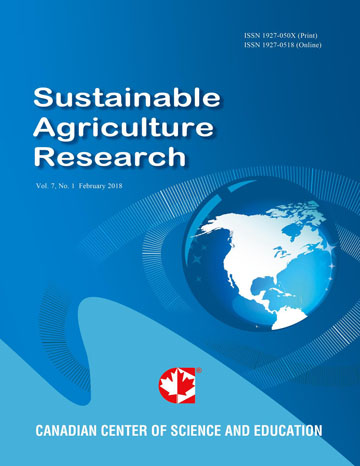Longevity of Nelore Cows of the Bolivian Tropics. Is It Possible to Explain It Through Productive Variables?
- Atsuko Ikeda
- Ivana Barbona
- Yoichiro Hayashi
- Juan A. Pereira
- Pablo R. Marini
Abstract
The objective of this work was to evaluate the longevity and its relationship with productive variables of Nelore cows in grazing systems of the Bolivian tropics. Retrospective data were used corresponding to 259 Nelore breed cows, primiparous and multiparous discarded with a total of 800 births, in the period between 2005 and 2019, belonging to the Cooperativa Agropecuaria Integral San Juan de Yapacaní (CAISY) located in the San Juan Japanese Communities, Santa Cruz, Bolivia. The variables analyzed were: Live weight of cow (WC) in kg, Weight of the calf at birth (WCB) in kg, Weight of calf at weaning (WCW) in kg, Total weight of weaned calf (WWC) in kg, Age at first calving (AFC) in months, Number of calvings (NC), Longevity (L) in days, Calf Index (CI) in kg, Accumulated Productivity (PAC) in kg, Total calf production (CP) in kg, Efficiency of Stock (ES) in kg. In order to respond to the main objective of this work, the relationship between the life longevity of the cow and the other productive variables was studied. For this, first principal component analysis (PCA) was carried out, by means of which the space dimension of the productive variables was reduced creating new linearly independent variables and in this way avoid problems of multicollinearity in the model, because the productive variables in some cases turned out to be correlated. Then, the first three main components that explain 77% of the total variability of the data were retained and interpreted as follows: The PC1 was high and directly correlated with the variables NC, Kg produced total, % of stock efficiency, PAC and Kg produced meat / day, therefore can be thought of as an indicator of "productive efficiency". PC2 was an indicator of "efficiency in rebreeding" since it presented altar and direct correlations with WC and AFC. PC3 was high and directly correlated with birth weight and weaning weight, which is interpreted as an indicator of "breeding efficiency". Finally, a multiple linear regression model was adjusted considering Longevity as a function of productive efficiency, breeding efficiency and rebreeding efficiency (p-value <0.0001 in the three cases). 87% of the total variability of L (days) is explained by the model. It is concluded that Longevity is related to productive indicators for this group of Nelore cows in grazing systems of the Bolivian tropics.
- Full Text:
 PDF
PDF
- DOI:10.5539/sar.v8n4p28
Index
Contact
- Joan LeeEditorial Assistant
- sar@ccsenet.org
